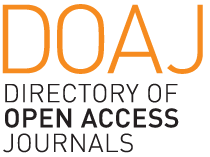Pohjamaan huokoisuussuhteista Suomen maalajeissa
Abstract
The purpose of this study is to outline the total pore space, field capacity and air capacity relationships in the whole textural range of Finnish subsoils. The 28 test plots were chosen from different parts of southern Finland. The subsoil layer of 30—90 cm. was sampled 1 to 3 times by means of a sampling tube (Photos 1—3). Each time four replicate cores were taken from the plot of one sq.yd. The land was kept clean so that the transpiration of the crop did not affect the results. The sampling places and dates are entered in Figures 1 to 28. The apparent soil volume is thereby divided into three parts, from left to right water (»vesi»), air (»ilma»), and soil solids. The air capacity and total pore space were calculated after specific gravity determination in alcohol (method: Heinonen 1954 a, p. 77). The texture of the soils is given in Figures 29—31. All of the soils, excluding nos. 27 and 28, contain organic matter less than 1 per cent. The moisture content is rather constant in most of the soils, indicating well defined field capacity. The results also indicate that in coarser soils ranging from medium sand to loam and, perhaps, in the heaviest glacial clays, too, the texture mainly determins the porosity relationships. A somewhat similar drainage and cropping history is obviously a necessary condition for the common profile characteristics in heavy clays. The porosity relationships of lighter clays are very variable. Nos. 27 and 28 are acid post-glacial clays (»muddy» or »gyttja» clay) with Ito 1.5 per cent organic matter and very pronounced fragmental structure in the subsoil.Downloads
How to Cite
Copyright (c) 2024 Reijo Heinonen

This work is licensed under a Creative Commons Attribution 4.0 International License.









